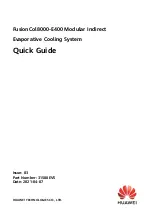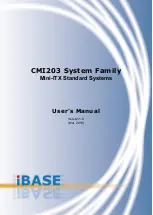
12
Name
Address
DIP Switch ID
1
2
3
4
5
6
Air return 2 T/H sensor
1
ON
OFF
OFF
OFF
OFF
OFF
Outdoor intake air 1 temp/humid
31
ON
ON
ON
ON
ON
OFF
Outdoor intake air 3 temp/humid
32
OFF
OFF
OFF
OFF
OFF
ON
Cold aisle 1 temp/humid
11
ON
ON
OFF
ON
OFF
OFF
Cold aisle 2 temp/humid
12
OFF
OFF
ON
ON
OFF
OFF
Cold aisle 3 temp/humid
13
ON
OFF
ON
ON
OFF
OFF
Cold aisle 4 temp/humid
14
OFF
ON
ON
ON
OFF
OFF
Cold aisle 5 temp/humid
15
ON
ON
ON
ON
OFF
OFF
Cold aisle 6 temp/humid
16
OFF
OFF
OFF
OFF
ON
OFF
Hot aisle 1 temp/humid
21
ON
OFF
ON
OFF
ON
OFF
Hot aisle 2 temp/humid
22
OFF
ON
ON
OFF
ON
OFF
Hot aisle 3 temp/humid
23
ON
ON
ON
OFF
ON
OFF
Hot aisle 4 temp/humid
24
OFF
OFF
OFF
ON
ON
OFF
Hot aisle 5 temp/humid
25
ON
OFF
OFF
ON
ON
OFF
Hot aisle 6 temp/humid
26
OFF
ON
OFF
ON
ON
OFF
1. Connect the
IN
port on the first T/H sensor outside the cabinet to the RS485/12V port on the
main control board.
2. Connect the
OUT
port on the T/H sensor outside the cabinet to the
IN
port on the next T/H
sensor outside the cabinet in series.
3. Set the DIP switches on the T/H sensors.
Each smart cooling product supports a
maximum of twelve T/H sensors outside the
cabinet, including a maximum of six cold aisle
T/H sensors and six hot aisle T/H sensors.
(1) RS485/12 V port on the main
control board
(2) Connecting to a T/H sensor
outside the cabinet
The T/H sensors outside the cabinet are used to detect the long-distance temperature and
humidity. They can be flexibly installed based on the onsite situation. It is recommended that
the sensors be deployed near heat sources, or near places that lack cooling air. Place the T/H
sensors outside the cabinet near the cabinet and do not directly face them to the air exhaust
vent of the equipment.
(Optional) Connecting T/H Sensors Outside Cabinets
6.2











































